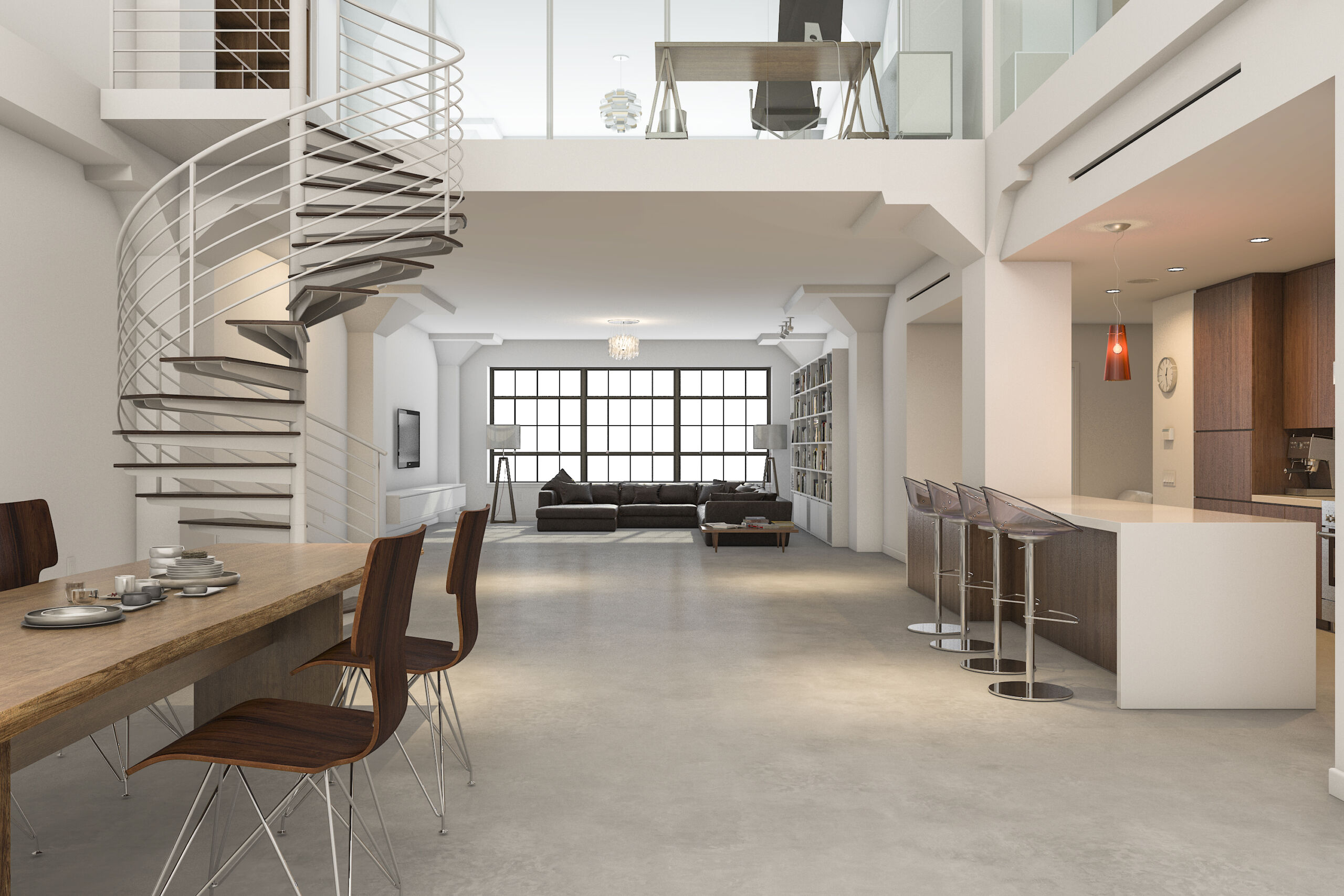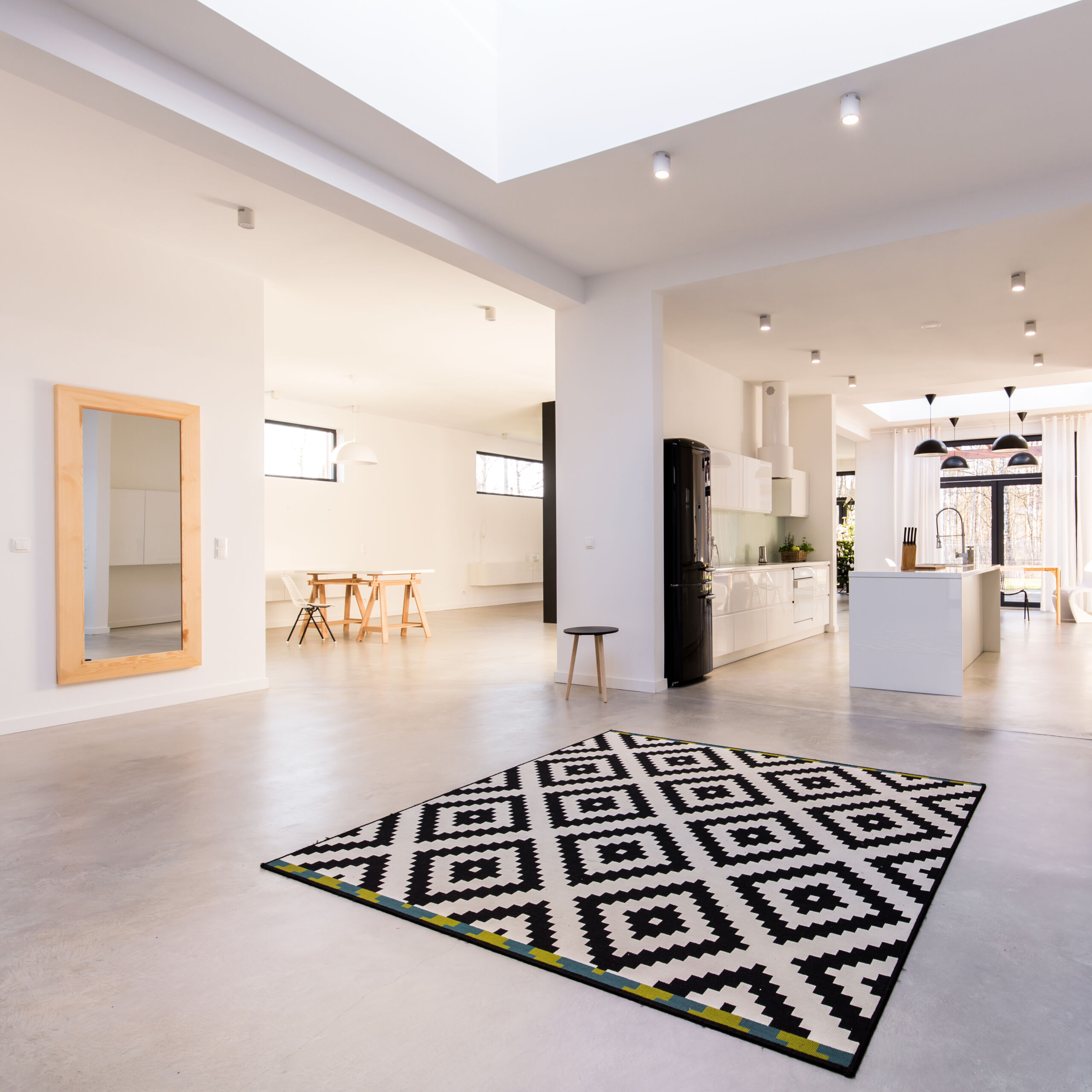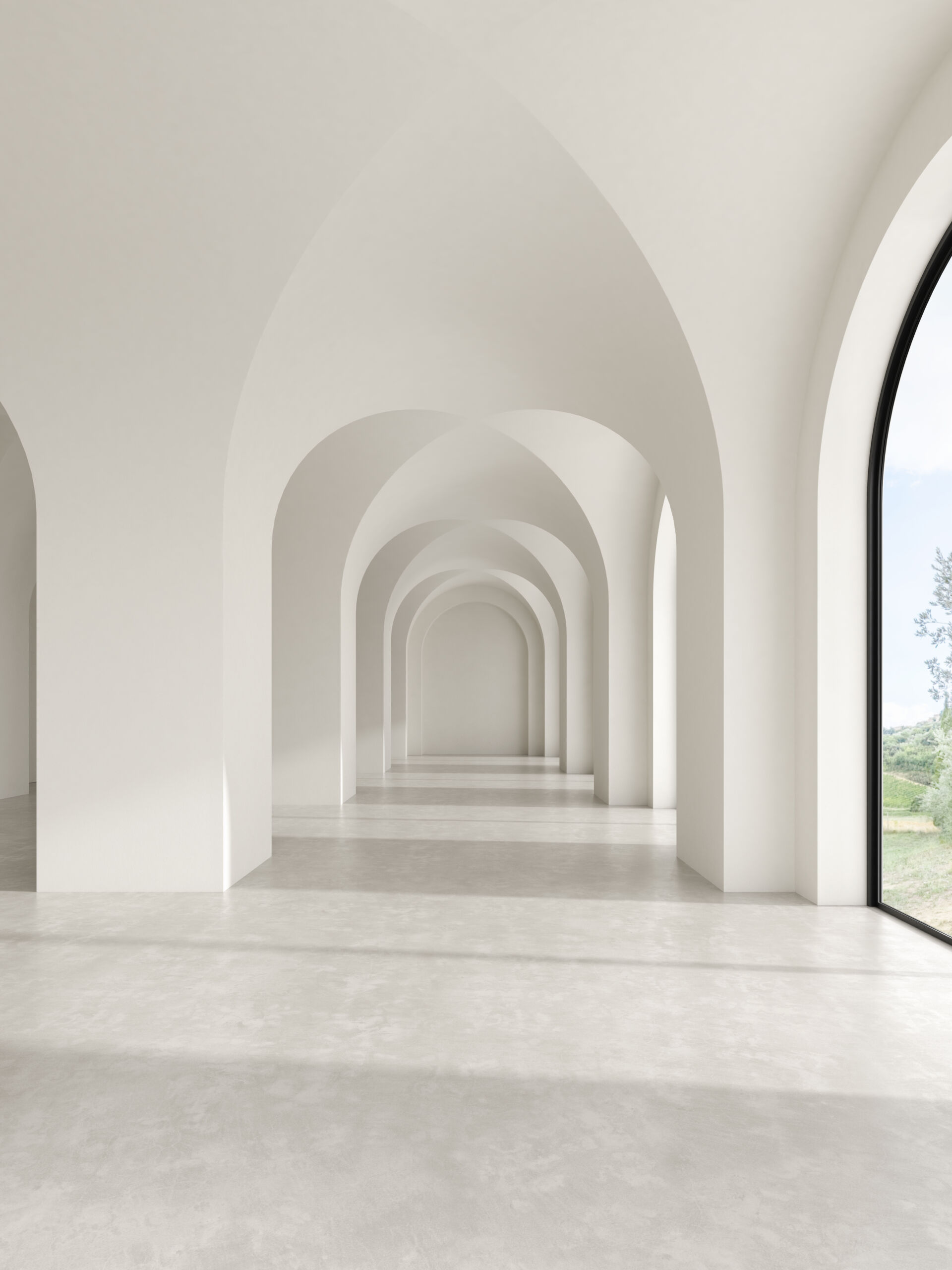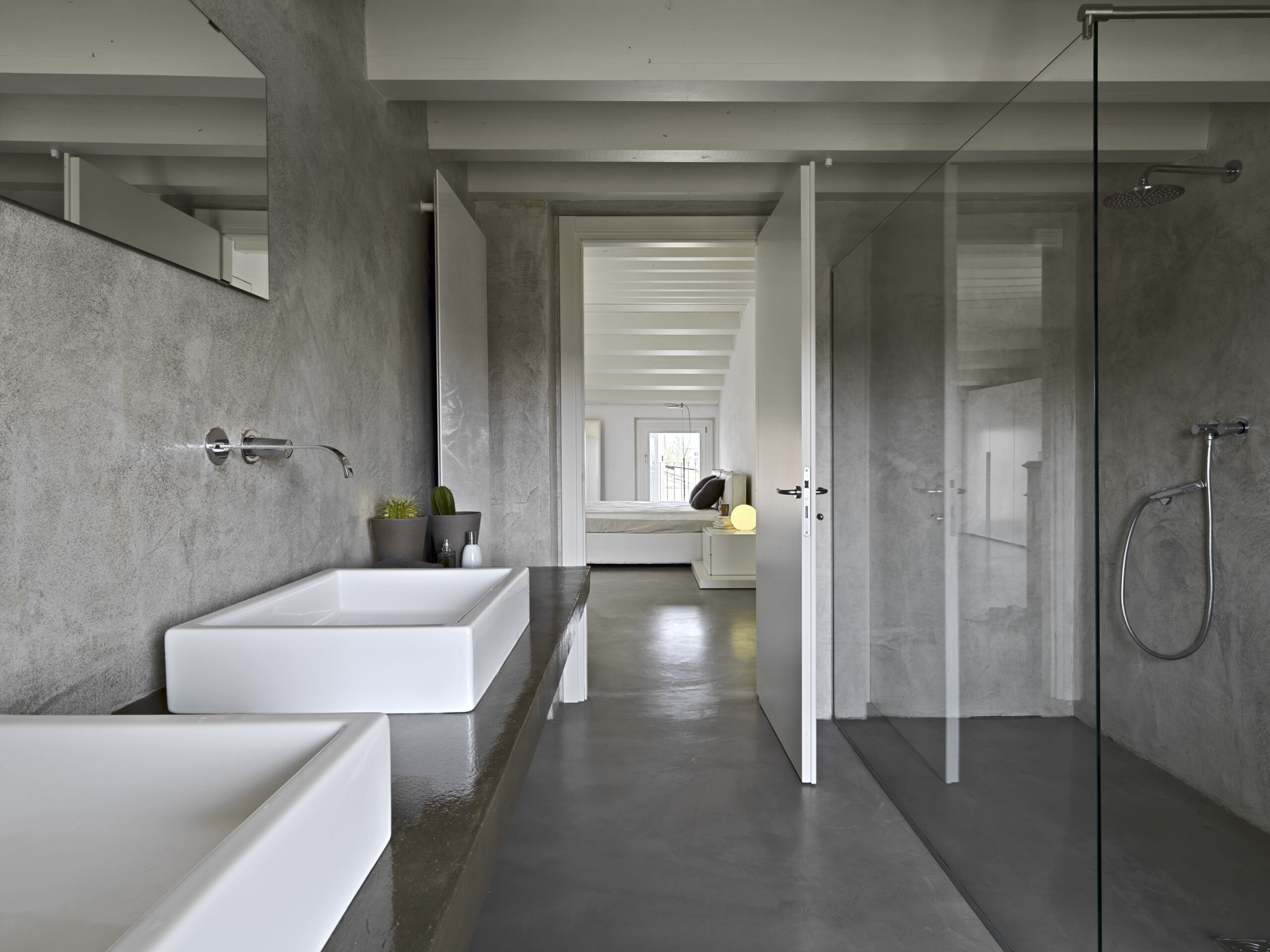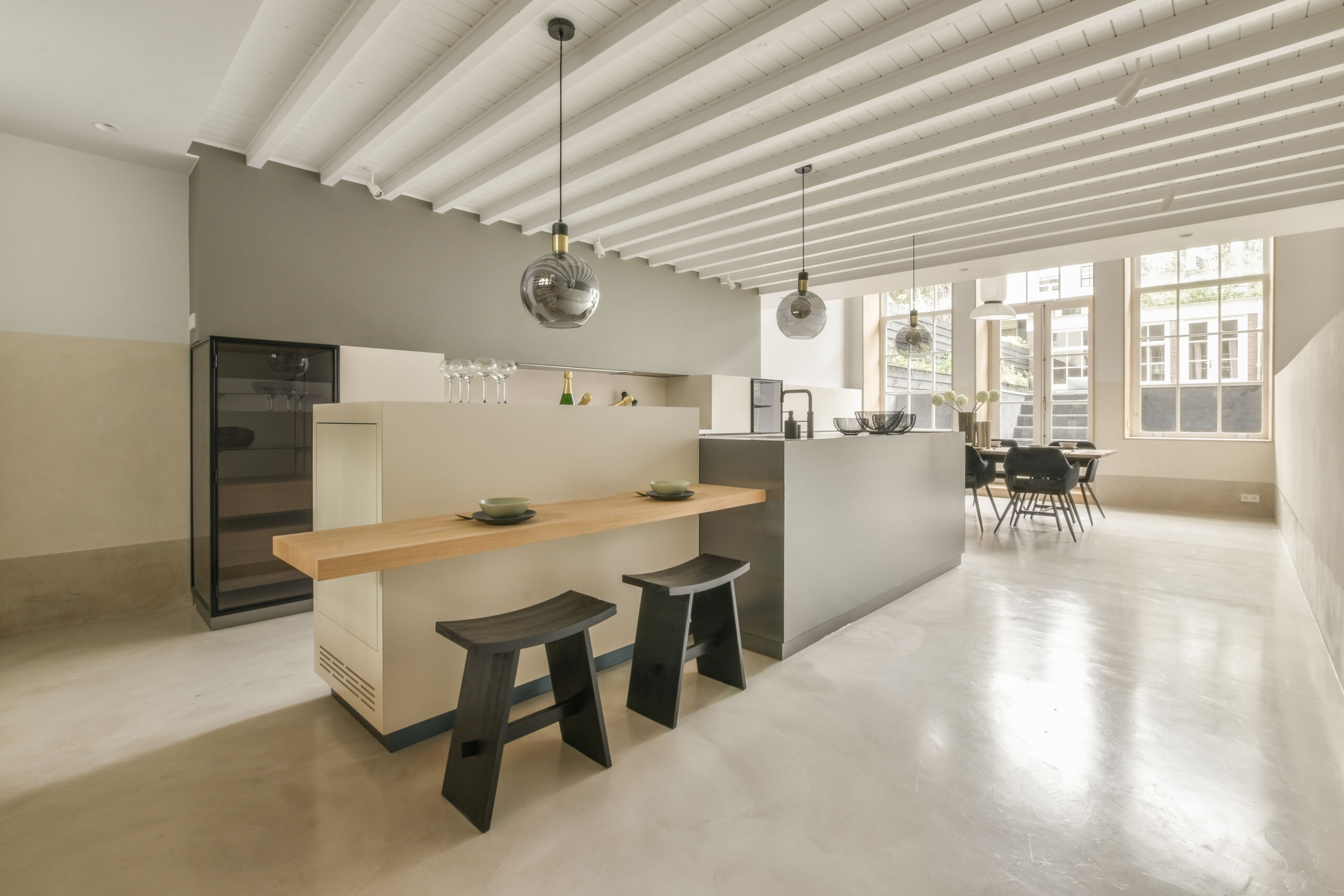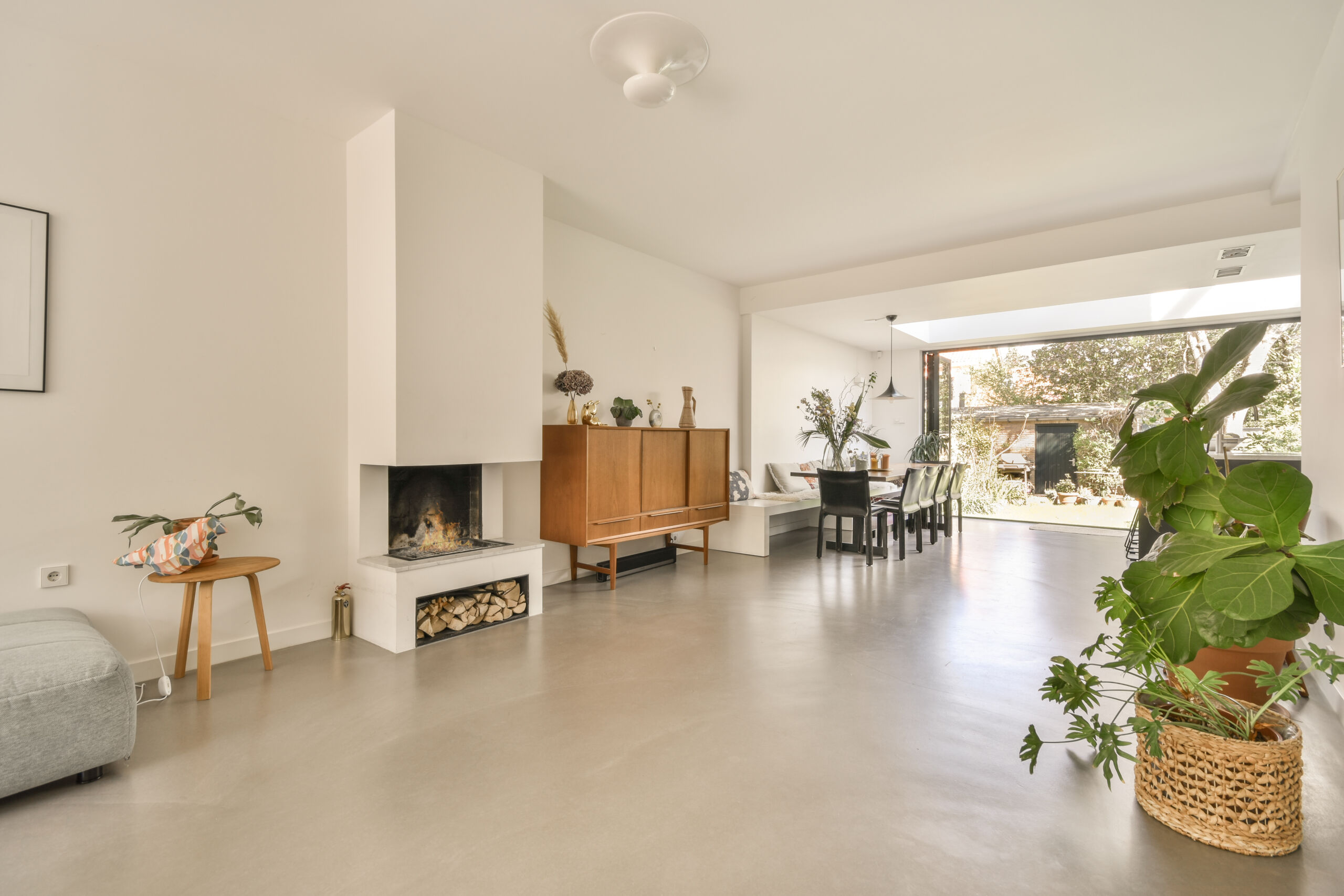Microcement Floor vs Polished Concrete Floor
When it comes to achieving a sleek, modern surface in today’s high-end interiors, two finishes stand out: polished concrete and microcement. Both deliver that coveted industrial-luxe aesthetic—but they serve different purposes, perform differently, and suit different types of projects.
If you’re renovating a home, condo, commercial space, or showroom in Toronto or the GTA, understanding the difference between these two materials will help you make an informed choice.
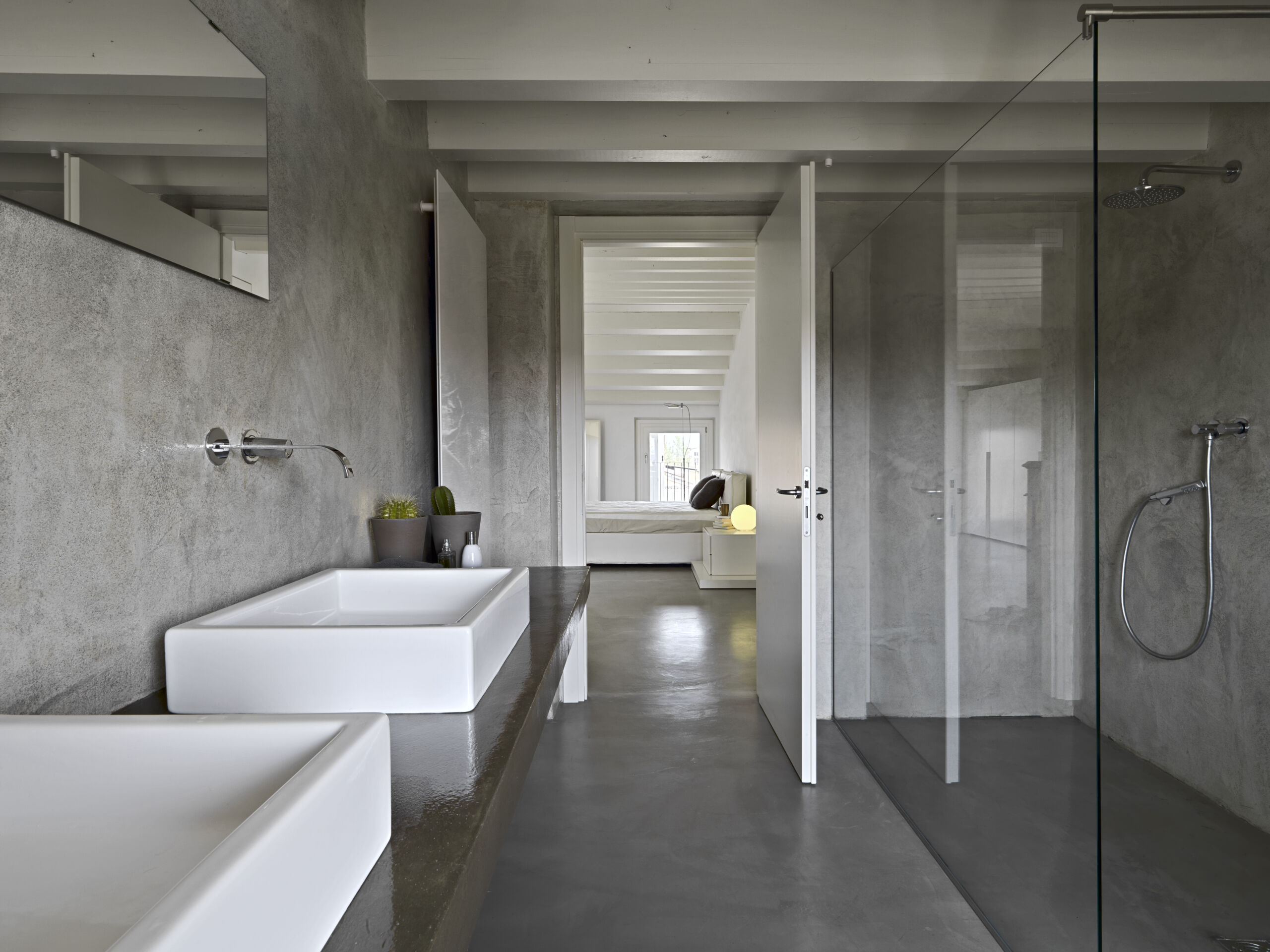
Speak To Shayan 416 (606) 8060 or Request A Quote
What Is Polished Concrete?
Polished concrete is exactly what it sounds like: the existing concrete substrate is ground down, honed, and polished using industrial diamond pads. The result is a hard, glassy surface that showcases the natural aggregate in the concrete.
Advantages of Polished Concrete
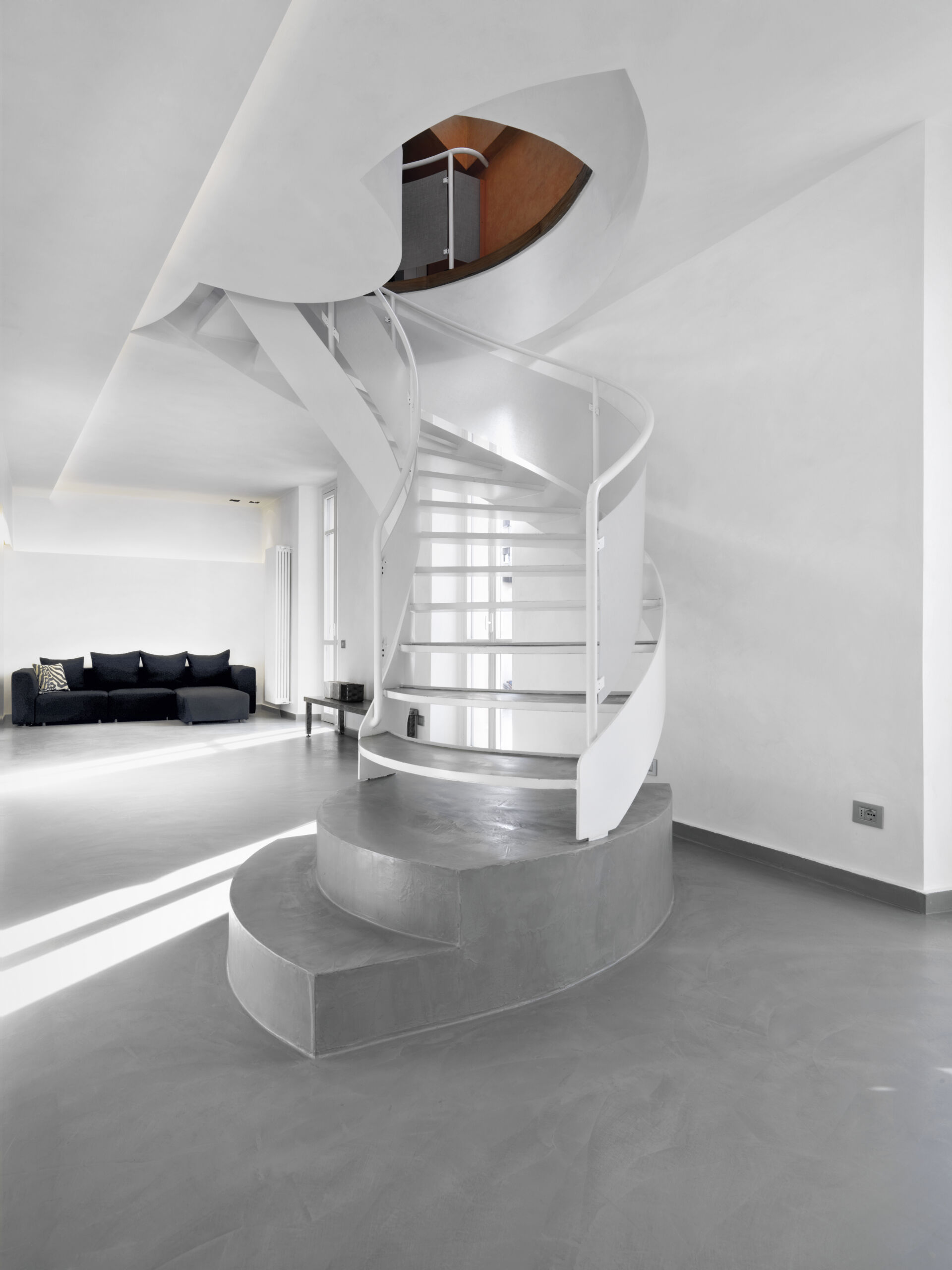
Limitations of Polished Concrete:
What Is Microcement?
Microcement (also called microtopping or microconcrete) is a thin, cement-based decorative coating applied by hand in multiple layers—usually 2–3 mm thick. It can be installed over a variety of surfaces: tile, wood, drywall, and concrete.
Advantages of Microcement:
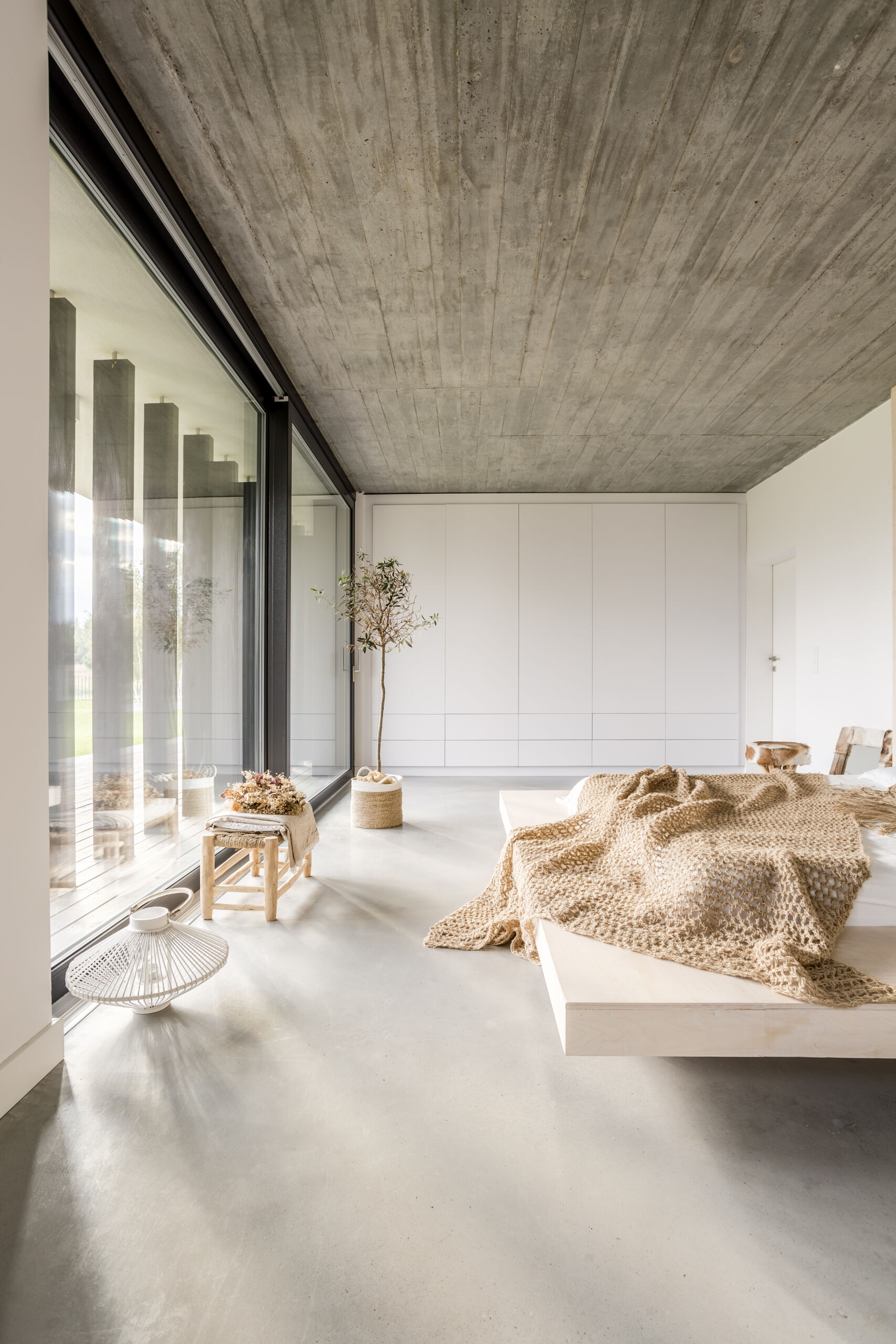
Limitations of Microcement:
Our Reviews
Chromatist Painters, led by Shayan, exceeded my expectations with their exceptional work on painting my entire house. They went above and beyond, showcasing their talent and attention to detail. Shayan’s guidance throughout the process was invaluable, ensuring that every corner was flawlessly painted. The team’s commitment to excellence and their dedication to customer satisfaction were evident in the outstanding results. I highly recommend Chromatist Painters for their extraordinary service and commend Shayan for his invaluable assistance.
We engaged Chromatist to paint our 100 year old home in mid-town Toronto this spring. There were a number of issues that made this job a little unique. We had just gotten our knob-and-tube wiring replaced so there were a lot of holes that had been recently roughly plastered over.
Also, there was a large hole in the lathe-and-plaster ceiling of our dining room from a plumbing leak. Finally, our hallway was finished with faux
painting that simulated marble and brick with some trompe-l’oele of leaves in a vase that we wished to preserve rather than paint over.Shayan and his team were a pleasure to work with and did a great job on this challenging project. Every day the painters were very considerate and minimized disruption such that we were able to continue to work from home during the whole process.
We especially appreciate the work on the faux painting in the hall, where Shayan had someone come in to analyze color matches and then hand painted and blended the colors so as to seamlessly hide the cracks and plaster that was there before. It looks better now than it did when we bought our house (a long time ago!).
Thanks Shayan and team. We are definitely interested in working with you again.
Shayan and his team were awesome!
Totally professional, trustworthy and got our job done very quickly ! They worked around our family of 5 while painting our whole house. They also worked well around the other tradespeople we had coming and going. Most importantly, the painting looked fantastic.
I highly recommend Chromatist painters!
I normally don’t like dealing with contractors, except for those few who truly understand the value of customer service. And Shayan and his team are the best! On time. On budget. Excellent job. Friendly. And Shayan knows that superior customer service is the key to happy customers. I highly recommend Shayan and Chromatist for any painting needs, you will be so happy you did
Polished Concrete vs. Microcement: Side by Side
| Feature | Polished Concrete | Microcement |
|---|---|---|
| Substrate Requirement | Concrete slab only | Concrete, tile, wood, drywall, furniture |
| Typical Thickness | N/A (ground slab) | 2–3 mm |
| Finish Style | High-gloss, natural aggregate | Smooth, seamless, matte to satin to gloss |
| Colour Options | Natural grey or dyed | Fully customizable |
| Water Resistance | Requires sealing | Fully waterproof when sealed |
| Ideal Spaces | Retail, industrial lofts | Bathrooms, kitchens, living areas, staircases, spas |
| Installation Disruption | Requires grinding machinery | Minimal—applied by hand |
| Comfort Underfoot | Hard, cold | Slightly warmer, softer |
| Maintenance | Very low | Low, periodic resealing recommended |
Which Should You Choose for Your Toronto Space?
- Choose polished concrete if you’re working in a space with an excellent concrete substrate and want that authentic industrial loft vibe.
- Choose microcement if you want versatility, seamless beauty, and the ability to resurface walls, ceilings, stairs, or surfaces where concrete grinding isn’t possible.
Many Toronto interior designers and architects now prefer microcement for high-end residential projects, spas, luxury retail spaces, and boutique hotels where flexibility and aesthetic control matter.
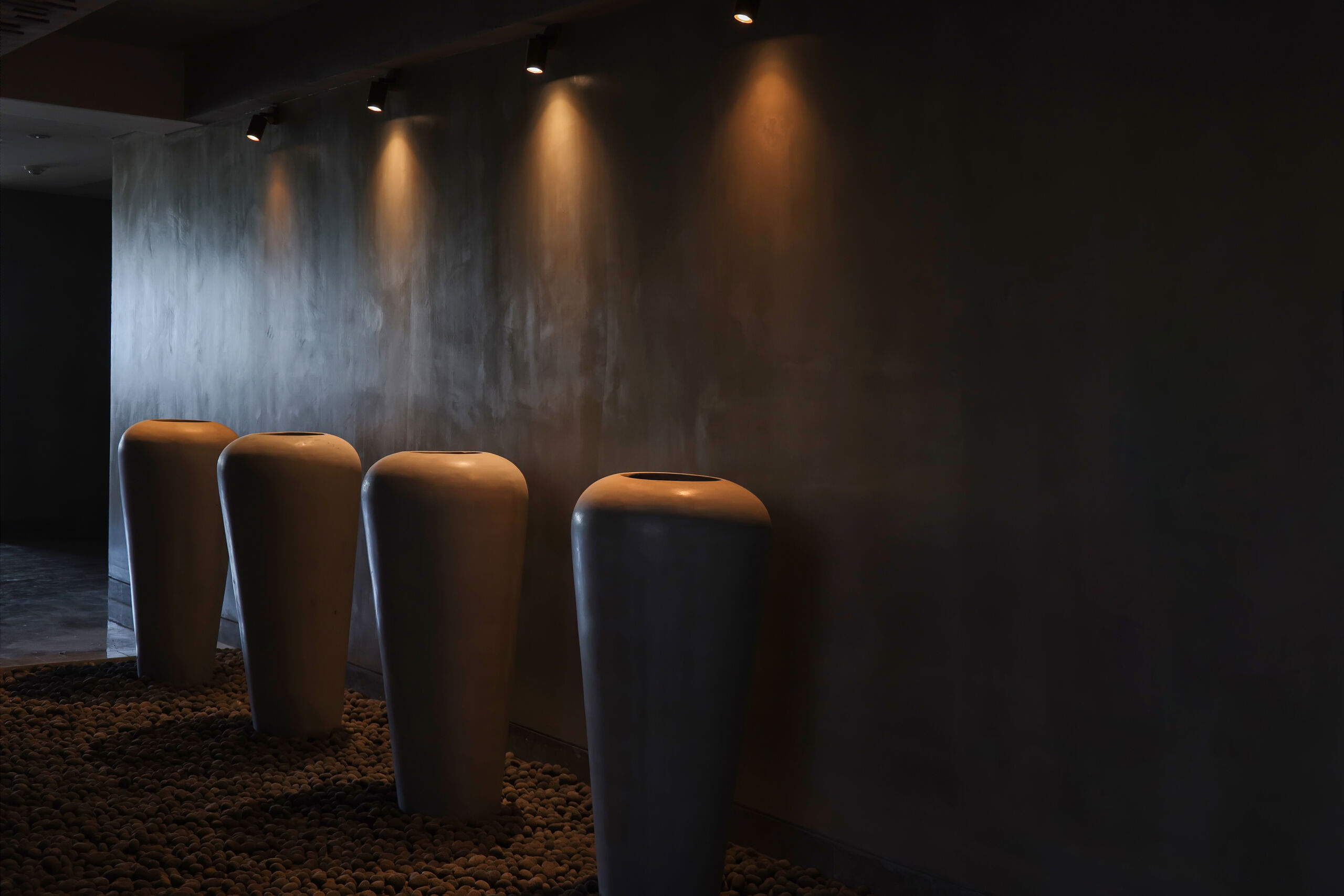
FAQ
Is microcement cheaper than polished concrete?
Not always. On large, open floor areas, polished concrete is often more cost-effective if you already have a good concrete substrate in place. However, if your existing floor needs extensive repair or if you’re applying the finish to walls, stairs, furniture, or wet areas, microcement can be a smarter investment—especially because it requires no demolition and offers more flexibility.
What are the disadvantages of microcement?
Softness & Patina: Microcement develops a natural patina over time. While many clients love this soft evolution, it may not suit every style.
Installation skill: Microcement is a hand-applied artisan finish. Poorly done applications can lead to cracking or unevenness.
Cost on large floors: In large commercial spaces where cost-per-square-foot matters, polished concrete may be more economical.
Learn more about microcement floors here.
What are the disadvantages of polished concrete flooring?
Requires perfect substrate: Polished concrete needs an excellent concrete slab. Any cracks, uneven areas, or previous coatings will show through.
Cold & hard: It can feel cold underfoot, especially in Toronto winters, and is not forgiving if you drop fragile items.
Acoustic properties: Polished concrete reflects sound and can make a space feel louder.
Limited application: It’s a floor-only solution—whereas microcement can be used seamlessly on walls, ceilings, furniture, and stairs.
What is a cheaper alternative to polished concrete?
Microcement can often be more affordable for feature walls, bathrooms, or multi-surface applications. Other budget-friendly options include:
Epoxy flooring (though less natural-looking and prone to yellowing)
Concrete-look tiles (but with visible grout lines)
Overlay cement coatings (basic, not decorative like microcement)
Is microcement good for garage floors?
Generally, no—microcement is not recommended for garage floors exposed to vehicular traffic, hot tires, and heavy mechanical use. For garage floors, polished concrete or epoxy coatings are more suitable and durable. Microcement is best for residential interiors, showrooms, and wet spaces like bathrooms and spas.
What is the life expectancy of polished concrete?
Properly installed and maintained polished concrete floors can last 20 to 30+ years—especially in residential or light commercial settings. Routine cleaning and periodic resealing can extend its lifespan.
Does polished concrete crack easily?
Polished concrete itself does not inherently crack—but if the underlying concrete slab moves, shrinks, or cracks, those imperfections will become visible on the polished surface. This is why slab preparation and control joint placement are crucial. In comparison, microcement is more flexible and can bridge minor surface imperfections.
Serving Downtown Toronto & Etobicoke Commercial Projects
At Chromatist, we specialize in both microcement and decorative concrete finishes in Toronto, the GTA, and beyond. Whether you’re renovating a Queen West loft, an Oakville spa, or a Rosedale home, we can help you select and apply the perfect finish for your project.
Contact us today for a free consultation!
Let’s Bring Texture & Sophistication to Your Commercial Design
Speak to Shayan at (416) 606-8060 or request a quote here.
We bring artisan-crafted, high-performance finishes to every surface of your commercial interior—from walls and ceilings to floors, counters, and niches.
Serving Toronto, Los Angeles, Florida and Texas
| Toronto & GTA | |
|---|---|
|
|
| Jacksonville | Tampa | Miami | Broward County | Palm Beach County |
|---|---|---|---|---|
|
|
|
|
|
| Los Angeles | Sacramento | Long Beach | Santa Monica | Mission Viejo |
|---|---|---|---|---|
|
|
|
|
|
| Dallas | Houston | Austin | San Antonio | Fort Worth |
|---|---|---|---|---|
|
|
|
|
|


